The Second Power Accumulator
This is the cocking and subsequent uncocking of the flat left wrist.(1) This accumulator can most easily be seen by the angle between the straight left arm and the clubshaft. The second accumulator’s “in line” condition would be where the clubshaft and left arm form a straight line, or as close as you, personally, can get to it.(2) You’ll notice few people set up with with the wrists fully uncocked at address (obvious exceptions would include Moe Norman and Bryson DeChambeau)(3) so you would begin accumulating from an already “out of line” condition.
Although the second power accumulator can been seen in the angle between the clubshaft and straight left arm, this is not always an accurate way to observe the second accumulator in action. For us to understand why, we must look to what Mr Kelley wrote about wrist positions.(4)
Although the second power accumulator can been seen in the angle between the clubshaft and straight left arm, this is not always an accurate way to observe the second accumulator in action. For us to understand why, we must look to what Mr Kelley wrote about wrist positions.(4)
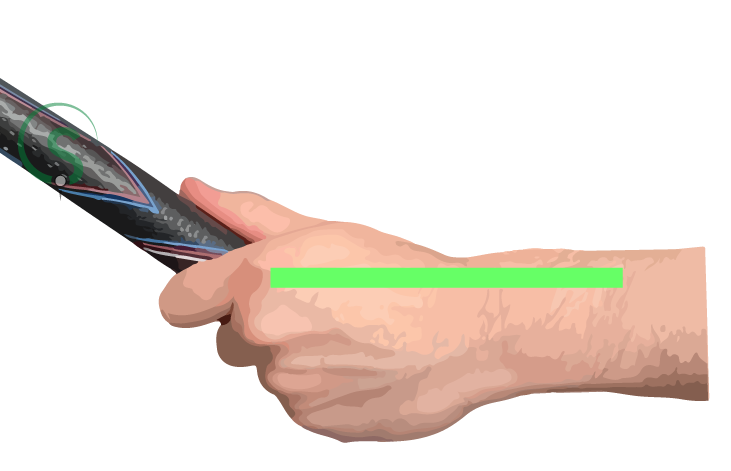
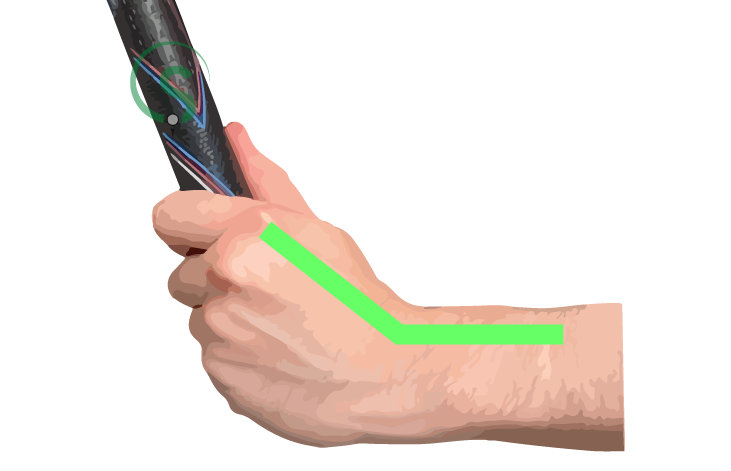
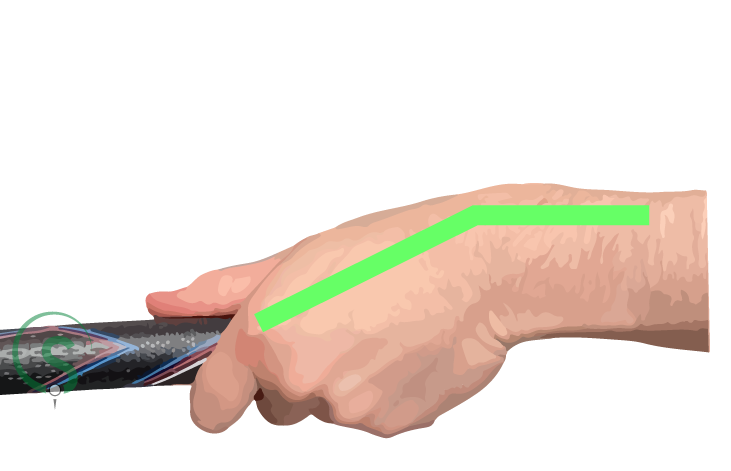
Level
Cocked
Uncocked

Level

Cocked

Uncocked
Mr Kelley identified three basic wrist motions: horizontal, perpendicular and rotational. For horizontal motions, the wrists are either flat, bent, or arched. A flat wrist is where the back of the hand is in line with the forearm - just as the first imperative. Bending the wrist decreases the angle between the forearm and the back of the hand. Arching the wrist increases the angle between the forearm and the back of the hand.(5)
We’ll discuss the rotational motions in the next accumulator. This leaves us with perpendicular motion.
The three perpendicular positions are: level, cocked and uncocked. In Mr Kelley’s own words: “The wrist is level when the wrist bone and the edge of the hand (to the first knuckle of the first finger) form a straight line.”(6) The wrists are cocked when this angle decreases (between the top of the forearm and the top edge of the hand), and are uncocked when this angle increases.
You’ll notice the range of motion of the left wrist cocking is actually quite small. Even at its fully cocked position, the angle between the clubshaft and left arm can be greater than 90 degrees. Yet when we see downstrokes of some golfers, the angle between the clubshaft and left arm is much smaller than 90 degrees. You’ll note that angle on professional “long driver” Jamie Sadlowski(7) appears less than 45 degrees.
We’ll discuss the rotational motions in the next accumulator. This leaves us with perpendicular motion.
The three perpendicular positions are: level, cocked and uncocked. In Mr Kelley’s own words: “The wrist is level when the wrist bone and the edge of the hand (to the first knuckle of the first finger) form a straight line.”(6) The wrists are cocked when this angle decreases (between the top of the forearm and the top edge of the hand), and are uncocked when this angle increases.
You’ll notice the range of motion of the left wrist cocking is actually quite small. Even at its fully cocked position, the angle between the clubshaft and left arm can be greater than 90 degrees. Yet when we see downstrokes of some golfers, the angle between the clubshaft and left arm is much smaller than 90 degrees. You’ll note that angle on professional “long driver” Jamie Sadlowski(7) appears less than 45 degrees.
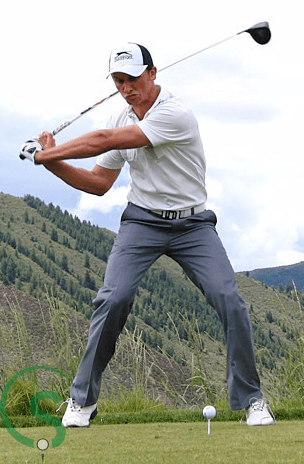
There are two reasons for this. Firstly, a concept called parallax, whereby this angle can appear to increase or decrease depending from where we’re viewing it.(8) The true angle between the left arm and clubshaft can only be measured when viewing it squarely. However, because we swing the golf club on an incline, we never see this angle as it actually is. The steeper the swing plane incline (for examples wedges and shorter clubs) the less distorted this angle becomes. Conversely, the shallower incline (the driver and other long clubs) the more it distorts.
The second, and predominant, reason Jamie Sadlowski, and many others, have such an acute angle between the left arm and clubshaft is because they’re not cocking their left wrist at all. Instead they have bent their left wrist and rotated it, substantially decreasing this angle. This is not the second accumulator. So, as you can see, although the angle between the clubshaft and left arm can be a useful reference point, it isn’t always an accurate tool to observe the second accumulator, which is exclusively the cocking and uncocking of the left wrist.
The second, and predominant, reason Jamie Sadlowski, and many others, have such an acute angle between the left arm and clubshaft is because they’re not cocking their left wrist at all. Instead they have bent their left wrist and rotated it, substantially decreasing this angle. This is not the second accumulator. So, as you can see, although the angle between the clubshaft and left arm can be a useful reference point, it isn’t always an accurate tool to observe the second accumulator, which is exclusively the cocking and uncocking of the left wrist.
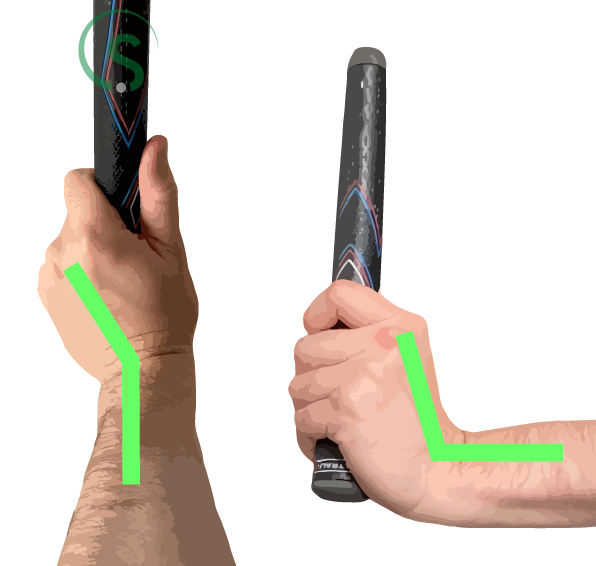
Bent
The pressure point for the second accumulator is located in the last three fingers of the left hand.(9) Referring back to the lever assemblies, the second accumulator is a force moving the secondary lever assembly, where the left wrist is the fulcrum and the clubhead is the weight.
